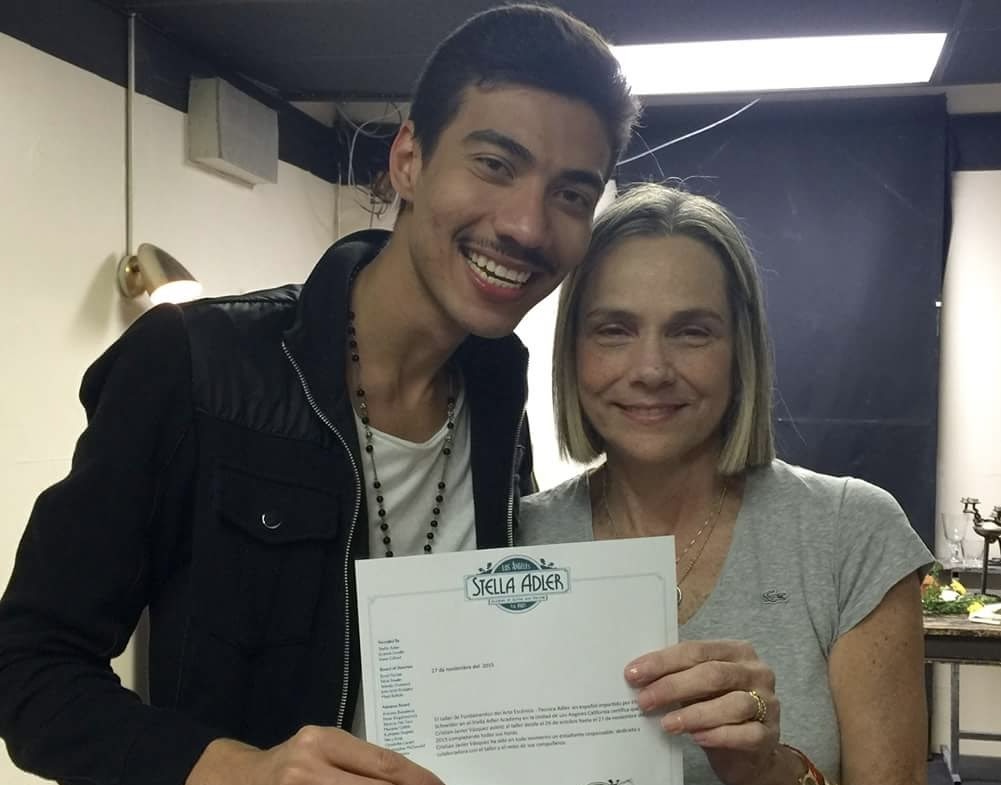(WASHINGTON, D.C.) — Cathy Gabrielsen was 39 years old when she met Jesus. He looked like the Jesus you would expect: long, flowing hair with glowing white skin and garments to match. She remembers being wrapped in his arms and surrounded by a powerful brightness. The feeling was unlike anything she’d ever experienced — that of unconditional love and connection. Gabrielsen was disappointed when Jesus told her she had to go. In heaven, everything glittered. But Gabrielsen still needed to discover her life’s purpose. So Jesus sent her back to Earth.
I’ve never spoken with someone who believes they’ve survived death, let alone seen heaven. So I asked just about every question. What did you see? Were all five senses intact? How does death feel? Did you encounter any dead family members? I realized my curiosity in Gabrielsen’s experience stemmed from my deep-rooted fear of death, something she no longer has.
Stories like Gabrielsen’s are common. Around 17 percent of people who experience life-threatening or deadly situations have what’s called a “near-death experience,” or NDE. Gabrielsen’s first brush with death was a car accident that left her with 150 stitches in her face and put her then-boyfriend in a coma. Her second brought her to Jesus.
While no NDE is the same, many experiences are marked by similar characteristics: outer body consciousness, an overwhelming sense of peace, interactions with spiritual beings, and intense unconditional love. It’s this experience that transforms a person’s life the minute they return. “I lost a lot of friendships that just faded away,” said Gabrielsen. “When you start to vibe higher, you want to connect with people that are vibing higher.”
Gabrielsen is part of a larger community of near-death experiencers, researchers, and doctors who come together to make sense of it all. Three years ago, she joined the International Association for Near-Death Studies (IANDS), an organization dedicated to the research and promotion of NDEs and provides support for people who’ve experienced them. Since the pandemic, the community has seen growth. Not only have more people reported NDEs, according to IANDS President Dr. Janice Miner Holden, but instances of a phenomenon called “after-death communication” — spiritual contact with a deceased loved one — have risen as well.
For doctors, scientists, and survivors in this community, the human conscience is above all. The more than 50 years of research on NDEs give insight into our ability to tap into a higher state of being while alive. After nearly two years of mass tragedy and isolation, near-death experiences like Gabrielsen hope more people can learn from the NDE community and understand that through death, there’s life. “Consciousness exists, and I’ve seen it. I know it,” Gabrielsen said. “There is no death. There is a transition. The only thing that we lose is our body, but our spirit continues.”
***
For many survivors of NDEs, community is everything. While the experience of dying and coming back to life can be traumatic, researchers and doctors emphasize the aftereffects of such experiences as the most profound aspect. Holden has been studying NDEs and other related transpersonal experiences for more than three decades. As sitting president of IANDS, she told me the organization goes deeper than education and research. “There is a sense of camaraderie, and that comes from an understanding of an experience that transcends the material world,” she said.
Holden was first introduced to NDEs in 1978 through the book “Life After Life” by philosopher and psychiatrist, Raymond Moody. Though she’s never had an NDE herself, she said being immersed in personal accounts and research has the same effect. “I feel very much affected by what I’ve learned from my research and my experiences,” Holden said. “I’m very much in tune with the message of NDEs.”
Research shows that nearly 80 percent of people who’ve had an NDE say they were forever changed by the experience. The aftermath interferes with nearly every aspect of a person’s life — from their spirituality to their relationship with loved ones and material things. For many near-death COVID patients, a brush with death results in changed values. Reports of life-threatening bouts with COVID highlight vaccine acceptance. In September, a Georgia councilman expressed a “change of heart” after his NDE. A 35-year-old pregnant woman’s COVID-induced NDE encouraged her to get vaccinated and express more love; she told Good Morning America, “Our world could use a lot more kindness and forgiveness and joy.”
Some commonly reported aftereffects of NDEs include gaining a clearer sense of purpose, stronger intuition, sensitivity to environmental factors like light, sound, and electricity, an aversion to meat, a greater concept of love and compassion, and a loss of religiosity.
All these revelations rang true for Robert, whose NDE took him from successful lawyer to world traveler and spiritual enthusiast. In 1974, Robert was attacked during an attempted robbery and experienced his NDE in the hospital. Soon after, he quit law and began a life of spiritual exploration. Robert described the feeling of needing to lead a simple life and adopted a vegetarian diet.
His experience is documented in the 1998 book “Lessons From the Light”, co-authored by researcher Evelyn Elsaesser, who has been studying NDEs for more than 30 years. Like Holden, she too has never experienced one but fell into the subject through Moody’s book. During our conversation, Elsaesser spoke about her research with “after-death communications,” or ADCs — when a deceased loved one is in contact through sensory perceptions. ADCs are more common than NDEs, with between 40 percent and 50 percent of people experiencing at least one. While there is no research showing an increase in ADCs since the start of the pandemic, Elsaesser’s research shows people who experience one have similar takeaways from those who experience NDEs. “All these phenomena are in fact linked and not interdependent, but they have common features,” Elsaesser said.
If you’ve ever had a dream about a deceased relative or simply felt their presence, then you’ve most likely experienced an ADC. Afterward, people typically report feeling more spiritual and confident in the concept of an afterlife. Elsaesser told me ADCs have one purpose — for your loved one to communicate, “I’m still alive, I’m with you, I’m happy, I’m well.”
I wanted to tell Elsaesser about my Uncle Jerry, who passed away in October from kidney failure. Since his death, I’ve been seeing him in my dreams. And at times, I still feel his presence. But I was too spooked to have an expert verify that ultimately, I’m communicating with the dead.
***
One of the biggest life hacks for people part of the NDE community is meditation. According to near-death experiencers, meditating offers the closest out-of-body sensation to that of an NDE. For Gabrielsen, meditation became an escape after a near-fatal case of sepsis led to her life-changing encounter with Jesus — an experience that at one point had her popping Ativan and Zoloft like “jelly beans.”
“You can meditate and you can go into another plane. You can travel and do whatever you want,” she said. “That was the best thing about meditation.”
The science behind NDEs and meditation is fascinating, if there even is one.
Dr. Marjorie Woollacott is a neuroscientist whose research surrounds the connection between NDEs, meditation, and consciousness. Since 1976, she’s been trying to make sense of it all. “There’s a very interesting similarity to what happens in the mind,” she said. “Basically, it’s turned down in meditation — especially with the default mode network of the brain that is our mind-wandering network — but that is turned down in meditation, psilocybin, or turned off in an NDE.” Through her research, Dr. Woollacott is trying to answer the essential question of whether consciousness beyond the brain is real, and if so, how do NDEs and meditation prove that?
When it comes to the pandemic and life in general, Dr. Woollacott suggests that the practice of meditation can boost our overall health as a society. By quieting the mind and remaining in the present, we’re able to focus better, form positive relationships, and grow a stronger sense of compassion. “Until you had one of those expansive experiences through meditations, spontaneous or through an NDE, you can’t appreciate how that transforms your worldview,” she said.
Through IANDS, people like Dr. Woollacott have found community. A scientist by training, she’s able to build relationships with others based on shared experiences and energy rather than through common educational or professional backgrounds — a connection she values. “The atmosphere of those meetings is very wonderful because people have been transformed by their NDE, and you can feel that transformation in terms of their sense of joy interacting with other people,” she said. “And so, it is a very enriching place.”
Similarly, Gabrielsen told me there’s comfort in the community’s shared understanding — something I can tell she’s not used to by the way she kept asking me if her story made sense.
Her story made plenty of sense. So much so that I didn’t want the conversation to end. We had gone from talking about her NDEs to vibrations, a topic she knows well as a certified energy healer. Somehow, Gabrielsen made me feel like I, too, was a part of the NDE community — her warmth contrasting the reality of the world around us. Our 40-minute call will stick with me for a long time. It’s almost as if I met Jesus myself and he told me exactly what I needed to hear.
“If we find good in our lives and that’s how we exist in this body — your vibration — it’s contagious,” Gabrielsen said. “You’re going to raise the vibration of places you go and the people you’re with.”


